The Massachusetts Water Resources Commission will vote on Revisions to MassDEP Regulations 310 CMR 36.00: The Water Management Act on October 21, 2014. We encourage all interested Cities, Towns, and Water Districts to attend and weigh in on our concerns. For more information, including time, location, and proposed revisions: WRC Agenda 10.21.14
Tag: water
The ALS Ice Bucket Challenge: bringing critical awareness for both ALS and the global water crisis

The ALS ice bucket challenge. At this point, everyone has seen or heard of it. Videos of friends and families, movie stars and sports figures, and even the neighborhood kids dousing themselves with icewater has flooded (pun intended) social media, and the whole project has thus far realized over $80 million dollars in donations for ALS research. Raising funds for ALS, a progressive neurodegenerative disease for which there is no cure, is arguably a very worthy cause, and one which we fully support. And, in addition to raising much-needed funds for ALS, the Ice Bucket Challenge has increased awareness on another important issue: the global water crisis. While you watch others pour water over their heads, or participate yourself, keep these facts in mind:
- An estimated 2.4 billion people lack adequate sanitation and 1.1 billion people are without access to safe water.
- 90 percent of wastewater in developing countries is discharged into rivers and streams without any treatment.
- There are 1.6 million deaths per year attributed to dirty water and poor sanitation (World Watch; World Health Organization)
- In the past ten years, diarrhea related to unsanitary water has killed more children than all the people lost to armed conflict since WWII.
- At any one time, it is estimated that half the world’s hospital beds are occupied with patients suffering from waterborne diseases.
- Every 15 seconds, a child dies from a water-related illness. That’s over 4,000 children every day, or 1.6 million children per year.
- Water-related illness is the leading cause of death in children under five years of age.
People may not realize that the average African family uses only 4-5 gallons of water per day. In addition, the small amount of water they do use is untreated and miles away. The task of gathering water falls to young women and girls, who often have to travel three to six hours per day to retrieve it, eliminating any possibility of education. The ripple effect of the water crisis is indeed far-reaching.
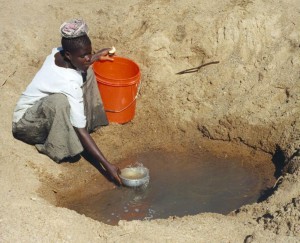
These facts are indeed sobering, and warrant some serious thought when it comes to our world’s most precious resource. Matt Damon, famed actor and co-founder of the charity water.org, opted to use toilet water for his Ice Bucket Challenge, stating that “the water in our toilets in the West is actually cleaner than the water that most people in the developing world have access to.” So we would like to applaud Matt Damon and to issue another challenge. Perhaps all those who participated in the Ice Bucket Challenge could also give a donation to Water For People. Water For People is a charitable organization whose goal is to ensure that “Everyone Forever” has access to improved water and sanitation. To date, over 2.4 million people have shared Ice Bucket Challenge videos on Facebook. If each of these people also gave just a single dollar to Water For People, the positive impact – $2.4 million – would be tremendous. The average cost to sustainably provide clean drinking water in Africa is $3.50 per person. If $2.4 million in donations were received, those funds would provide a permanent drinking water solution for about 700,000 people. Will you accept the challenge?
For more information on Water For People, or to make a donation, please visit their website: www.waterforpeople.org.
REFERENCES:
https://www.waterinfo.org/resources/water-facts
https://www.dosomething.org/facts/11-facts-about-water-developing-world
Roald Haestad, Inc. Staff Join the Tata & Howard Team
Roald Haestad, Inc. staff join the Tata & Howard team
Tata & Howard enhances its water, wastewater, and stormwater consulting engineering services and adds dam engineering services by acquiring the assets of Connecticut-based consulting firm Roald Haestad, Inc.
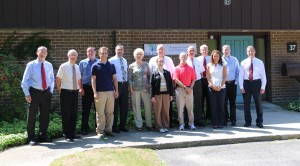
WATERBURY, CT, August 27, 2014 – Tata & Howard, Inc., a leading innovator in water, wastewater, stormwater, and hazardous waste engineering solutions, announced today that it has acquired the assets of Roald Haestad, Inc., (RHI) a civil engineering consulting firm located in Waterbury, CT. Founded in 1971, RHI is a full service civil engineering firm providing services in water supply, stormwater, water distribution systems, and wastewater collection systems, with targeted expertise in safe yields and dam engineering. Throughout its 43-year history, RHI has built a solid reputation for providing superior design and engineering services along with exceptional client relations. Additional services include roadways, permitting, funding assistance, GIS, and surveying, including GPS, floodplain mapping, and bathymetric surveys.
“Our acquisition of RHI complements our existing engineering consultant offerings by allowing us to provide additional civil engineering services, including dam engineering, surveying, and streamflow release analysis,” noted Donald J. Tata, P.E., co-founder and President of Tata & Howard, Inc. “We intend to provide the same high-level service to the clients of RHI, and are excited about the wide variety of options we can now offer to our existing and new clients,” explains Tata.
To provide the best possible transition for current RHI clients, Tata & Howard will continue operations from Haestad’s Waterbury location, along with existing RHI employees. “The acquisition significantly adds to our talent base and also expands our geographic presence in New England,” Tata commented. “RHI employees bring decades of solid engineering experience to the table, and we are enthusiastic to have them on the Tata & Howard team.”
Ronald G. Litke, P.E., President of RHI, will be retiring and remain available on a limited basis, He commented, “In looking to the future, our key concerns were our clients and our employees” he commented. “By joining Tata & Howard, we have ensured seamless transition and exceptional service for our clients, along with a stable and bright future for our employees. It’s a win-win situation.”
Canaan, VT Receives $4.8 Million from USDA
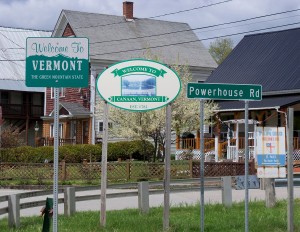 The town of Canaan, VT has received $4.8 million in funding from the U.S. Department of Agriculture Rural Development to address chronic water quality issues. Engineering is being provided by Tata & Howard, and construction is expected to commence by May 2015. Read the full article here: Caledonian Record May 29 2014 – Canaan VT receives funding to address water quality
The town of Canaan, VT has received $4.8 million in funding from the U.S. Department of Agriculture Rural Development to address chronic water quality issues. Engineering is being provided by Tata & Howard, and construction is expected to commence by May 2015. Read the full article here: Caledonian Record May 29 2014 – Canaan VT receives funding to address water quality
Water For People – Making a Substantial and Sustainable Difference
 Water. For us, it’s as natural as breathing. When we want a drink, we run our faucet. To wash our dishes, or our clothing, we press a button. We always have access to restrooms, whether in a public facility or a private residence. Clean water and sanitation are rights, not privileges. But for millions of people outside our borders, life is very different:
Water. For us, it’s as natural as breathing. When we want a drink, we run our faucet. To wash our dishes, or our clothing, we press a button. We always have access to restrooms, whether in a public facility or a private residence. Clean water and sanitation are rights, not privileges. But for millions of people outside our borders, life is very different:
- 780 million people worldwide lack access to clean water. That’s 2.5x more people than live in the United States.
- More than 3.4 million people die each year from water, sanitation, and hygiene-related causes. That is almost the entire city of Los Angeles. 99% of these deaths occur in developing nations.
- Every 21 seconds, a child dies from a water-related illness. The majority of illness comes from fecal matter.
- The water and sanitation crisis claims more lives through disease than any war claims through guns.
Virtually all people in developed nations have access to clean water and sanitation. The areas of the world with the lowest percentage of people having access to clean water and improved sanitation are sub-Saharan Africa and southern Asia. And to put those numbers into perspective
- An American taking a five-minute shower uses more water than the average person in a developing country uses for an entire day.
- More people have a mobile phone than a toilet.
These are sobering facts indeed.
At Tata & Howard, we firmly believe that every single person on Earth should have access to clean water and improved sanitation. And because of our strong conviction, we have chosen to support Water For People, a charitable organization that works diligently to bring improved water and sanitation facilities to developing countries. Their goal is water for Everyone Forever, and when they say everyone, they mean everyone. Their methodology is precise and comprehensive, and has brought real and lasting results.
- Water For People collaborates with IRC International Water and Sanitation Centre, and Water & Sanitation for the Urban Poor (WSUP) to target districts in defined geographic regions for an Everyone Forever program.
- Success is defined as every household, every school, and every public health facility/clinic in those regions having access to improved water and sanitation services.
- Financial, physical, and operational investments are made by local and national governments, community residents, and other organizations to address current and future challenges of water systems and services. Eventually, target communities won’t need support from an international water agency ever again.
- Development agencies monitor field results for at least 10 years, but the monitoring capacity and responsibility are firmly embedded within communities and government. Data and results are publicly available to everyone.
- Everyone Forever programming grows from full coverage at district levels to national level and beyond, freeing countries from water and sanitation aid dependency.
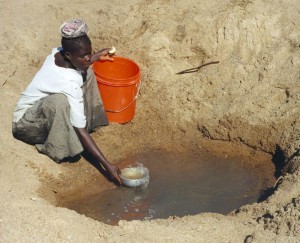
Water For People, the American Water Works Association’s (AWWA) charity of choice, will have a prominent presence at ACE14, the AWWA’s Annual Conference being held June 8-12 in Boston. They will host a booth, an evening fundraiser, an awards luncheon, and will give a presentation at a professional session. More information on Water For People at ACE14 can be found here.
Tata & Howard gives to Water For People through its workplace giving campaign by encouraging employees to donate through automatic payroll deduction which the company then matches dollar for dollar. We encourage you to learn more about Water For People and to visit their website where you can personally see the profound benefits that have come about as a result of their efforts: https://www.waterforpeople.org.
Tata & Howard and Turner Engineering Announce Strategic Partnership
Tata & Howard and Turner Engineering Announce Strategic Partnership
Flagstaff engineering firms Tata & Howard and Turner Engineering have formed a partnership to provide comprehensive civil, water, wastewater, stormwater, and hazardous waste engineering services at one location.
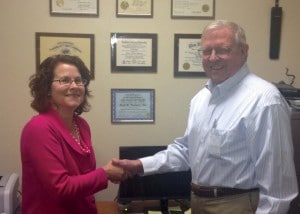
FLAGSTAFF, AZ, May 8, 2014 – Tata & Howard, Inc., a leading innovator in water, wastewater, stormwater, and hazardous waste engineering solutions, and Turner Engineering, Inc., a professional civil engineering firm with extensive experience in Northern Arizona, announced today that they have formed a comprehensive partnership in order to provide the highest quality service to their Arizona clients.
Founded in 1992 in Marlborough, Massachusetts, Tata & Howard specializes in environmental engineering with targeted expertise in water, wastewater, stormwater, and hazardous waste services. Founded in 1986 in Flagstaff, Arizona, Turner Engineering brings over 28 years of successful experience in all aspects of civil engineering, including design, management, and permitting.
Tata & Howard, Inc., and Turner Engineering, Inc., both located at 528 West Aspen Avenue in Flagstaff, Arizona, are enthusiastic about the increased level of service and capability that they will bring to their clients.
“TEI brings extensive civil engineering experience to the table such as site planning and design, land subdivision infrastructure, planning, and design, and extensive understanding of all local and governmental permitting processes, while Tata & Howard brings their comprehensive environmental engineering services including water and wastewater master planning, treatment, and design, stormwater management and compliance, new source development and permitting, hazardous waste services including due diligence and site assessments, hydraulic modeling and GIS, and pipe condition assessment” remarked Paul W. Turner, P.E., President of Turner Engineering. “Both firms have extensive experience with energy efficiency studies and low impact design, which is a must for the environmentally conscious Flagstaff area.”
“With this alliance, we will integrate our firms’ combined knowledge and expertise to provide a unified service to our clients under one effort,” added Shira A. McWaters, P.E., Associate and Manager of Tata & Howard’s Flagstaff location. “Together we will provide our clients the attentive service of a small firm with the capabilities and experience of a large firm.”
About Tata & Howard, Inc.
Founded in 1992, Tata & Howard, Inc. is a specialized water, wastewater, stormwater, and hazardous waste consulting engineering firm with offices in Massachusetts, New Hampshire, Connecticut, Maine, Vermont, and Arizona. Tata & Howard utilizes a team approach with clients to provide a full range of innovative engineering services, from concept to completion, including reports, design, construction administration, resident observation, and start-up. In addition, Tata & Howard has worked with all sized markets, both public and private, to provide effective, inventive solutions. For more information, please visit tataandhoward.com.
About Turner Engineering, Inc.
 Founded in 1986, Turner Engineering, Inc. is a professional civil engineering firm specializing in developing sites with unique and sensitive design challenges. TEI focuses on exceptional client service and provides a wide range of civil engineering services to private, commercial, institutional, and governmental clients including civil site design, drainage design, master planning, subdivision development, and roadway design, and has full working knowledge of permitting processes of local governmental agencies, FEMA, and Army Corps of Engineering (404) analysis and permitting. For more information, please visit www.teiaz.com.
Founded in 1986, Turner Engineering, Inc. is a professional civil engineering firm specializing in developing sites with unique and sensitive design challenges. TEI focuses on exceptional client service and provides a wide range of civil engineering services to private, commercial, institutional, and governmental clients including civil site design, drainage design, master planning, subdivision development, and roadway design, and has full working knowledge of permitting processes of local governmental agencies, FEMA, and Army Corps of Engineering (404) analysis and permitting. For more information, please visit www.teiaz.com.
Contact:
Karen Gracey, P.E.
Tata & Howard, Inc.
508-303-9400 x120
kgracey@tatandhoward.com
tataandhoward.com
James J. Courchaine joins Tata & Howard, Inc. as Vice President
James J. Courchaine joins Tata & Howard, Inc. as Vice President
Key hire brings over 40 years of innovative water and wastewater experience to its Flagstaff, Arizona office
 FLAGSTAFF, AZ, March 31, 2014 – Tata & Howard, Inc., a leading innovator in water, wastewater, stormwater, and hazardous waste engineering solutions, has announced that James J. Courchaine has joined the firm as Vice President. Mr. Courchaine has over 40 years experience in every facet of water and wastewater management, operations, and maintenance. He assisted with the development of the first Capacity, Management, Operations, and Maintenance (CMOM) guidelines as well as authored the Wastewater Collection System Operator Certification Studybook. Mr. Courchaine developed an innovative assessment matrix and structural framework for utility operations evaluation and improvement and is recognized as a subject matter expert at the national level. In addition, he developed and taught water and wastewater management, operations, and maintenance courses at the college level. He is also honoree and first recipient of the James J. Courchaine Collection Systems Award. Mr. Courchaine will be working out of Tata & Howard’s Flagstaff, Arizona office located at 528 W. Aspen Avenue. He can be reached at 928-774-9500 or jcourchaine@tataandhoward.com.
FLAGSTAFF, AZ, March 31, 2014 – Tata & Howard, Inc., a leading innovator in water, wastewater, stormwater, and hazardous waste engineering solutions, has announced that James J. Courchaine has joined the firm as Vice President. Mr. Courchaine has over 40 years experience in every facet of water and wastewater management, operations, and maintenance. He assisted with the development of the first Capacity, Management, Operations, and Maintenance (CMOM) guidelines as well as authored the Wastewater Collection System Operator Certification Studybook. Mr. Courchaine developed an innovative assessment matrix and structural framework for utility operations evaluation and improvement and is recognized as a subject matter expert at the national level. In addition, he developed and taught water and wastewater management, operations, and maintenance courses at the college level. He is also honoree and first recipient of the James J. Courchaine Collection Systems Award. Mr. Courchaine will be working out of Tata & Howard’s Flagstaff, Arizona office located at 528 W. Aspen Avenue. He can be reached at 928-774-9500 or jcourchaine@tataandhoward.com.
About Tata & Howard, Inc.
Founded in 1992, Tata & Howard, Inc. is a specialized water, wastewater, stormwater, and hazardous waste consulting engineering firm with offices in Massachusetts, New Hampshire, Connecticut, Maine, Vermont, and Arizona. Tata & Howard utilizes a team approach with clients to provide a full range of innovative engineering services, from concept to completion, including reports, design, construction administration, resident observation, and start-up. In addition, Tata & Howard has worked with all sized markets, both public and private, to provide effective, inventive solutions. For more information, please visit tataandhoward.com.
Contact:
Karen Gracey, P.E.
Tata & Howard, Inc.
508-303-9400 x120
kgracey@tatandhoward.com
tataandhoward.com
“Get to Know Your H2O! During Drinking Water Week 2014: May 4-10
The American Water Works Association (AWWA) and the water community officially kicked off Drinking Water Week 2014 across North America today by asking the question, “What do you know about H2O?”
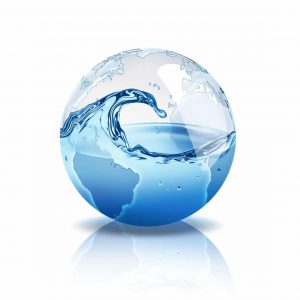 Throughout the week, the water community will celebrate the value of water by learning about the critical role it plays in our daily lives and in the quality of life we enjoy. Aligning with this year’s theme, special attention will be given to the ways in which all water consumers can get to know their H2O.
Throughout the week, the water community will celebrate the value of water by learning about the critical role it plays in our daily lives and in the quality of life we enjoy. Aligning with this year’s theme, special attention will be given to the ways in which all water consumers can get to know their H2O.
To commemorate the occasion, water utilities, environmental advocates, and others will celebrate drinking water through school events, public presentations, and community festivals. They will also provide their communities with vital information on how water consumers can get to know their H2O.
In addition, 2014 sees the celebration of the 40th anniversary of the Safe Drinking Water Act, which works diligently to safeguard the quality of drinking water in the United States. The Safe Drinking Water Act is a federal law that went into effect in 1974, and it works through effectively setting health-based standards and regulations and overseeing drinking water suppliers. Amendments to the Act in 1986 and 1996 increased the effectiveness and protection of drinking water and drinking water sources.
Currently in the U.S., community water systems are required to test their drinking water for contaminants and to report any violations that may have occurred. More information about the Safe Drinking Water Act is available on the U.S. EPA’s website.
Finally, Tata & Howard joins the American Water Works Association and all water professionals across North America in urging consumers to evaluate how they currently value, use, and access water, and how to protect it into the future.
North America’s water systems are critical to maintaining public health, economic vitality, fire protection, and quality of life. However, current trends in population, economic growth, energy, climate, and pollution affect water usage and the critical infrastructure the system needs to function properly.
As our systems’ aging pipes are repaired and replaced over the next 25 years, addressing this issue may be costly, but not insurmountable. Facing it head-on by proactively investing in our water systems now is a smart, safe, and common sense investment that will pay off for generations to come. More information about water infrastructure investment is available on the AWWA website.
So what do you know about H2O? Head over to our Facebook page and let us know! Everyone who likes our page and leaves us a comment will be entered to win a Home Depot gift card! It’s as easy as clicking here: https://www.facebook.com/TataandHoward
Happy Drinking Water Week!
Earth Day – Water Conservation
April 22nd marks the 44th annual Earth Day, and with it comes an increased urgency to protect our natural resources and to mitigate the damage that we are doing to our environment. Here at Tata & Howard, our passion is water. Only 1% of the world’s water is available for use as drinking water, and we support the goal to keep it safe, clean, and abundant. While government agencies such as the EPA aim to protect our nation’s water supplies from being depleted or contaminated, they can only do so much. True conservation comes at a grassroots level — from the individual. The average American uses 140-170 gallons of water per day, a number which can and should be reduced drastically. Below, we have collected some ideas to help save water in your home.
WATER CONSERVATION IN THE HOME
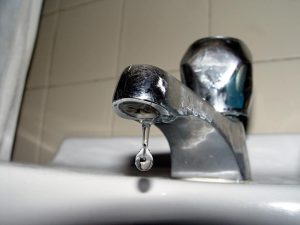 Lock up leaks
Lock up leaks
Put a little food coloring in your toilet tank. Without flushing, let it sit for 30 minutes. If the color seeped into the bowl, you have a leak that should be repaired immediately. In addition, a leaky faucet can waste 100 gallons a year. That’s the equivalent of 180 showers! The good news is that most replacement parts are inexpensive and easy to install.
Tame the trash
Dispose of tissues, insects, food, and other such waste in the trash rather than the toilet. Every time you flush, five to seven gallons of water goes literally and figuratively down the toilet. Avoid flushing unnecessarily.
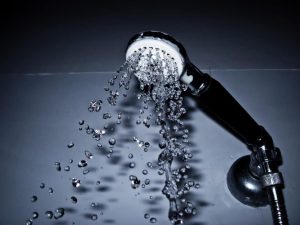 Shore up your shower
Shore up your shower
Showers can use five to ten gallons of water every minute. Limit your showers to the time it takes to wash and rinse off. A 5-minute shower uses about 20 gallons of water, while a 10-minute shower uses over 40 gallons! Also, inexpensive water-saving low-flow shower heads or restrictors are easy to install. “Low-flow” means it uses less than 2.5 gallons per minute.
Protect your pipes
It’s easy and inexpensive to insulate your water pipes with pre-slit foam pipe insulation. You’ll get hot water faster and avoid wasting water while it heats up.
Turn off the tap
Leaving the tap on while brushing your teeth or shaving wastes a whopping five gallons of water. Turn the water off while you brush. For shaving, fill the sink with a few inches of warm water in which to rinse your razor. When washing dishes by hand, don’t leave the water running for rinsing. Wash all dishes first, then rinse them all at once. And, don’t let the faucet run while you clean vegetables. Just rinse them in a stoppered sink or use a spray nozzle.
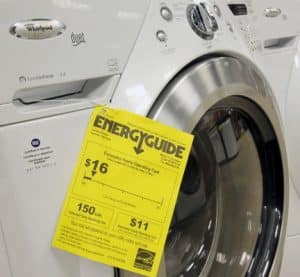 Load your loads
Load your loads
Automatic dishwashers and clothes washers should be fully loaded for optimum water conservation. Don’t pre-rinse dishes. Most dish soap manufacturers recommend against it, and it saves additional water. With clothes washers, avoid the permanent press cycle, which uses an extra five gallons. For partial loads, adjust water levels to match the size of the load. Replace old clothes washers with new Energy Star rated washers which use 35 – 50% less water and 50% less energy per load. If you’re in the market for a new clothes washer, consider buying a water-saving frontload washer.
Cool your canister
Store drinking water in the refrigerator rather than letting the tap run every time you want a cool glass of water.
Reuse the rest
Never put water down the drain when there may be another use for it such as watering a plant or cleaning your home.
WATER CONSERVATION IN THE YARD AND GARDEN
 Plant your property
Plant your property
If you are planting a new lawn, or overseeding an existing lawn, use drought-resistant grasses and choose shrubs and plants that thrive with less watering than other species. Replace herbaceous perennial borders with native plants, which use less water and are more resistant to local plant diseases. Plant slopes with varieties that will retain water and help reduce runoff, and group plants according to their watering needs.
Mind the Mulch
Mulch will slow evaporation of moisture while discouraging weed growth. Adding 2-4″ of organic material such as compost or bark mulch will increase the ability of the soil to retain moisture. Press the mulch down around the dripline of each plant to form a slight depression, which will prevent or minimize water runoff.
Love your lawn
Water your grass and trees more heavily, but less often. This saves water and builds stronger roots. A light sprinkling can evaporate quickly and tends to encourage shallow root systems. Put an empty eco-safe tuna can on your lawn; when it’s full, you’ve watered about the right amount. Also, water your lawn only when it needs it. If you step on the grass and it springs back up when you move, it doesn’t need water. If it stays flat, it needs water. Watering lawns during the early morning hours or evening when temperatures and wind speed are lowest reduces losses from evaporation. Most lawns only need about 1″ of water each week. In addition, allow your lawn to grow to 3″ before mowing. This practice promotes water retention in the soil. During dry spells, you can stop watering altogether and allow your lawn to go brown and dormant. Once cooler weather arrives, the morning dew and rainfall will bring the lawn back to its usual vigor. This results in a brown summer lawn – and a green residence.
 Groom the gardens
Groom the gardens
Add organic matter and use efficient watering systems for shrubs and flowerbeds. Adding compost to your soil will help increase its absorption and water retention, and will improve the health of your plants. Avoid over-watering plants and shrubs, as this can actually diminish plant health and cause yellowing of the leaves. When hand watering, use a variable spray nozzle for targeted watering.
Eco your auto
Clean the car using a pail of soapy water, and only use the hose for rinsing. This easily implemented practice can save as much as 150 gallons when washing a car.
Sweep the street
Use a broom, not a hose, to clean driveways and sidewalks.
In 1990, 30 US states reported ‘water-stress’ conditions. In 2000, that number rose to 40. In 2009, the number rose again, to 45. Today, some states find themselves in an actual water crisis, and the number of water-stressed areas continues to rise at an alarming rate. One of the easiest and most beneficial ways to alleviate this water stress is to take measures within our own lives. Families should practice water mindfulness together, with parents teaching their children and leading by example. Saving water at home requires minimal effort and expenditure yet provides a positive and powerful environmental impact. And, if you are one of the 85% of Americans receiving your water from a public water supply, these ideas will save you a significant amount of money as well.
Happy Earth Day!
Senators Introduce Legislation in Response to West Virginia Water Crisis
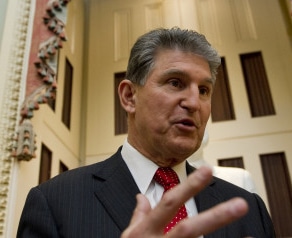
In response to the recent water crisis that left over 300,000 West Virginians without water, a group of Senate Democrats have prepared a bill that aims to protect the American people from chemical spills that threaten public drinking water supplies. US Senators Joe Manchin (D-W.Va.), Barbara Boxer (D-CA), and Jay Rockefeller (D-W.Va.) intend to introduce The Chemical Safety and Drinking Water Protection Act of 2014, which includes both prevention of and preparedness for future chemical spills, to Congress when they return from recess this week.
Key principles of the bill include implementing regular state inspections of above-ground chemical storage facilities and requiring the industry to develop state-approved emergency response plans. In addition, the bill would allow states to recoup costs incurred from responding to emergencies.
“No West Virginian or American should have to go through something like this again, and that is why I plan to introduce common sense legislation to make sure all chemicals are appropriately monitored,” Senator Manchin said. “We can work to improve the safety of Americans by ensuring that chemicals are properly managed, while also balancing the positive impact the chemical industry has made to our country.”
Senator Boxer said, “This legislation protects children and families across the nation by providing the tools necessary to help prevent dangerous chemical spills that threaten their drinking water.”
“The fact that there was a lack of regulations which allowed this particular storage facility to go uninspected for so many years is absurd,” Senator Rockefeller said. “I’m encouraged we are taking these steps to bring some accountability to industry that will help protect West Virginia families and our state’s economy.”
The Chemical Safety and Drinking Water Protection Act of 2014 aims to implement the following initiatives:
State Programs: Establish state programs under the Safe Drinking Water Act to oversee and inspect chemical facilities that present a threat to sources of drinking water;
Build on Existing Drinking Water Protection Plans: Direct states to use existing source water protection plans developed under the Safe Drinking Water Act to identify facilities that present a risk to drinking water;
Minimum Federal Standards for State Programs: Establish minimum standards for chemical facilities subject to a state program, including the following:
- Construction standards;
- Leak detection and spill and overfill requirements;
- Emergency response and communications plans;
- Notification of the EPA, state officials, and public water systems of chemicals that are being stored at a facility.
Minimum Inspection Requirements: Require inspection of these facilities on a regular basis. Facilities identified in drinking water protection plans are inspected every 3 years and all other facilities are inspected every 5 years;
Ensure Drinking Water Systems Have Information: Require information on chemical facilities to be shared with drinking water systems in the same watershed;
Give Drinking Water Systems Tools to Address Emergencies: Allow drinking water systems to act in emergency situations to stop an immediate threat to people who receive drinking water from a public water system;
Ensure States Can Recover Costs for Response: Allow states to recoup costs incurred from responding to emergencies.
The chemical facility that caused the West Virginia water crisis, Freedom Industries, had not been inspected in over 20 years, did not report the spill, and had no emergency response plan in place. Read about the crisis here.


